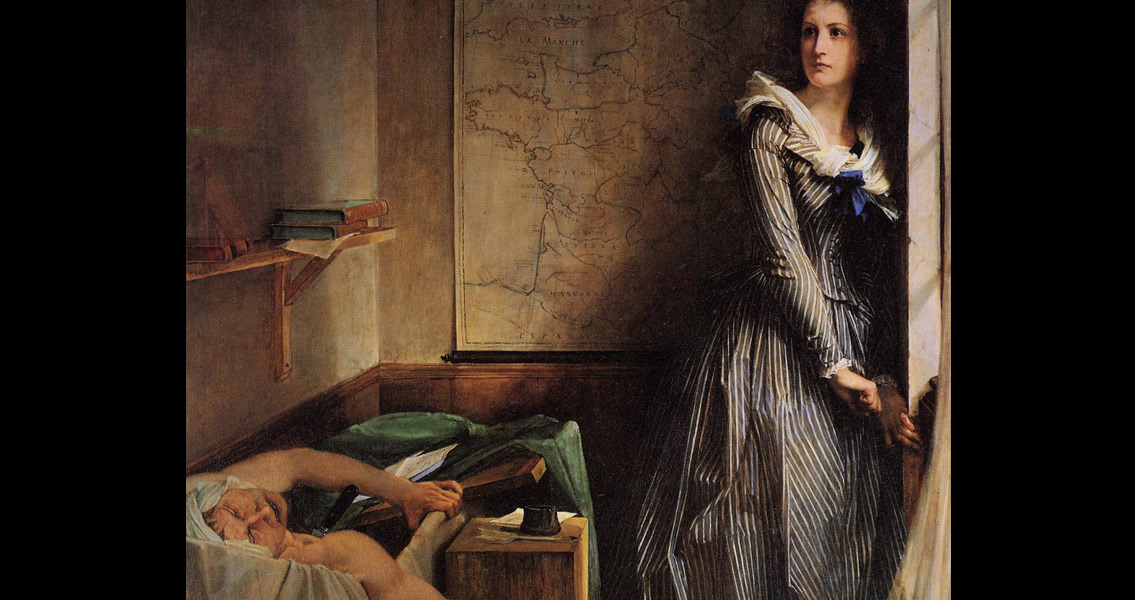<![CDATA[On 13th July 1793, the day before the fourth anniversary of the fall of the Bastille, a shocking assassination revealed the continuing instability in the wake of the French Revolution. Marie-Anne Charlotte de Corday d'Armont, the daughter of a noble family in Caen, had spent the day pleading for an audience with Jean-Paul Marat, a leading figure in France's National Convention. Despite being turned away twice by his companion Simone, Corday was finally allowed into Marat's home on the Rue des Cordeliers, south of the Seine. Marat was in the bath while the interview was conducted, stricken with an illness that had meant he'd hardly left his home over the previous few weeks. Corday gave him a list of names of Girondin plotters hiding in Caen, and then drew a butchers knife she had concealed under her dress and stabbed him through the heart. The Deputy of the National Convention died in his bath. Corday couldn't escape, and was arrested at the scene. Tried by the Revolutionary Tribunal on 16th - 17th July, she was subsequently guillotined at the Place de la Revolution. Killing Marat was far from a spontaneous action from Corday. Seeking an opportunity to slay Morat, the 25 year old had arrived in Paris several days previously. Before leaving Caen she had paid off all her debts, and written farewell letters to her friends and family. Corday went to Paris with a clear plan, aware that its successful execution would likely result in her execution. Corday's family, once aristocratic, had become impoverished in the wake of the French Revolution, fostering resentment and reinforcing Corday's royalist sentiment. In June 1793 the Girondins, a moderate group which campaigned for constitutional government, were expelled from the National Convention. Many of them fled to Caen, where Corday likely came across some of them and was inspired to join their cause. She quickly became fixated on Marat in particular, seemingly viewing him as the root cause of the problems the Revolution had wrought. Marat, who before the French Revolution had been a well respected physician, became a vocal critic of the French monarchical system during the 1780s. As the decade wore on he became increasingly radical, moving from a belief the monarchy could still play a role in a more democratic France to unrestrained attacks on the whole of the aristocracy. In 1789 he founded and became chief editor of L’Ami du Peuple, a fiery journal which many historians consider a key trigger to the violent swing the the revolution took in the 1790s. Elected to the Revolutionary Legislature, Marat quickly became a powerful opponent to the Girondins and an increasingly clear symbol of the most violent excesses of the French Revolution. In the months leading up to his death however, a mysterious skin condition had left him confined to his home. Corday arrived in Paris with designs on assassinating Marat in the National Convention, making his death a public spectacle. Once she found out he was unlikely to ever appear there again, she was left with no choice but to use the promise of naming the Girondin rebels in Caen as a means to gain his trust, and access to his home. ]]>
Corday Murders Marat in His Bath
